Laurent Sartran
SynJax: Structured Probability Distributions for JAX
Aug 15, 2023Abstract:The development of deep learning software libraries enabled significant progress in the field by allowing users to focus on modeling, while letting the library to take care of the tedious and time-consuming task of optimizing execution for modern hardware accelerators. However, this has benefited only particular types of deep learning models, such as Transformers, whose primitives map easily to the vectorized computation. The models that explicitly account for structured objects, such as trees and segmentations, did not benefit equally because they require custom algorithms that are difficult to implement in a vectorized form. SynJax directly addresses this problem by providing an efficient vectorized implementation of inference algorithms for structured distributions covering alignment, tagging, segmentation, constituency trees and spanning trees. With SynJax we can build large-scale differentiable models that explicitly model structure in the data. The code is available at https://github.com/deepmind/synjax.
Measuring Progress in Fine-grained Vision-and-Language Understanding
May 12, 2023Abstract:While pretraining on large-scale image-text data from the Web has facilitated rapid progress on many vision-and-language (V&L) tasks, recent work has demonstrated that pretrained models lack "fine-grained" understanding, such as the ability to recognise relationships, verbs, and numbers in images. This has resulted in an increased interest in the community to either develop new benchmarks or models for such capabilities. To better understand and quantify progress in this direction, we investigate four competitive V&L models on four fine-grained benchmarks. Through our analysis, we find that X-VLM (Zeng et al., 2022) consistently outperforms other baselines, and that modelling innovations can impact performance more than scaling Web data, which even degrades performance sometimes. Through a deeper investigation of X-VLM, we highlight the importance of both novel losses and rich data sources for learning fine-grained skills. Finally, we inspect training dynamics, and discover that for some tasks, performance peaks early in training or significantly fluctuates, never converging.
Continuous diffusion for categorical data
Dec 15, 2022



Abstract:Diffusion models have quickly become the go-to paradigm for generative modelling of perceptual signals (such as images and sound) through iterative refinement. Their success hinges on the fact that the underlying physical phenomena are continuous. For inherently discrete and categorical data such as language, various diffusion-inspired alternatives have been proposed. However, the continuous nature of diffusion models conveys many benefits, and in this work we endeavour to preserve it. We propose CDCD, a framework for modelling categorical data with diffusion models that are continuous both in time and input space. We demonstrate its efficacy on several language modelling tasks.
Transformer Grammars: Augmenting Transformer Language Models with Syntactic Inductive Biases at Scale
Mar 01, 2022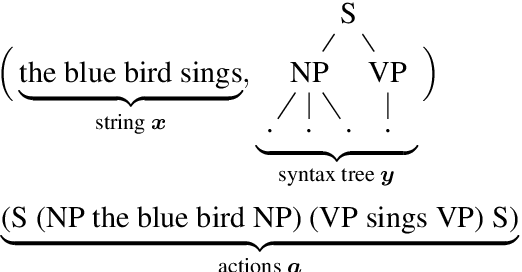

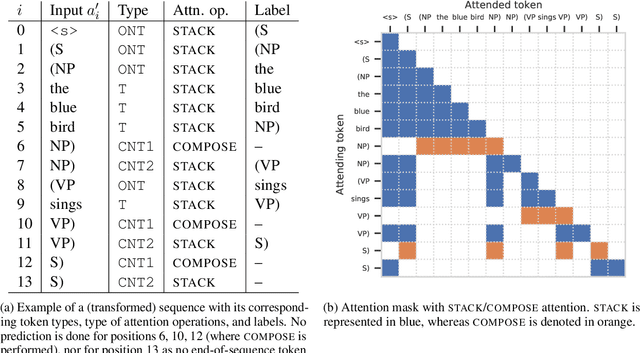

Abstract:Transformer language models that are trained on vast amounts of data have achieved remarkable success at various NLP benchmarks. Intriguingly, this success is achieved by models that lack an explicit modeling of hierarchical syntactic structures, which were hypothesized by decades of linguistic research to be necessary for good generalization. This naturally leaves a question: to what extent can we further improve the performance of Transformer language models, through an inductive bias that encourages the model to explain the data through the lens of recursive syntactic compositions? Although the benefits of modeling recursive syntax have been shown at the small data and model scales, it remains an open question whether -- and to what extent -- a similar design principle is still beneficial in the case of powerful Transformer language models that work well at scale. To answer these questions, we introduce Transformer Grammars -- a novel class of Transformer language models that combine: (i) the expressive power, scalability, and strong performance of Transformers, and (ii) recursive syntactic compositions, which here are implemented through a special attention mask. We find that Transformer Grammars outperform various strong baselines on multiple syntax-sensitive language modeling evaluation metrics, in addition to sentence-level language modeling perplexity. Nevertheless, we find that the recursive syntactic composition bottleneck harms perplexity on document-level modeling, providing evidence that a different kind of memory mechanism -- that works independently of syntactic structures -- plays an important role in the processing of long-form text.
Enabling arbitrary translation objectives with Adaptive Tree Search
Feb 23, 2022
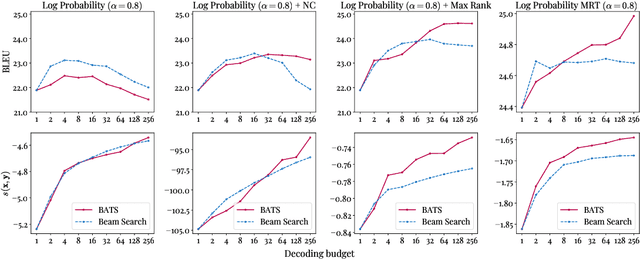

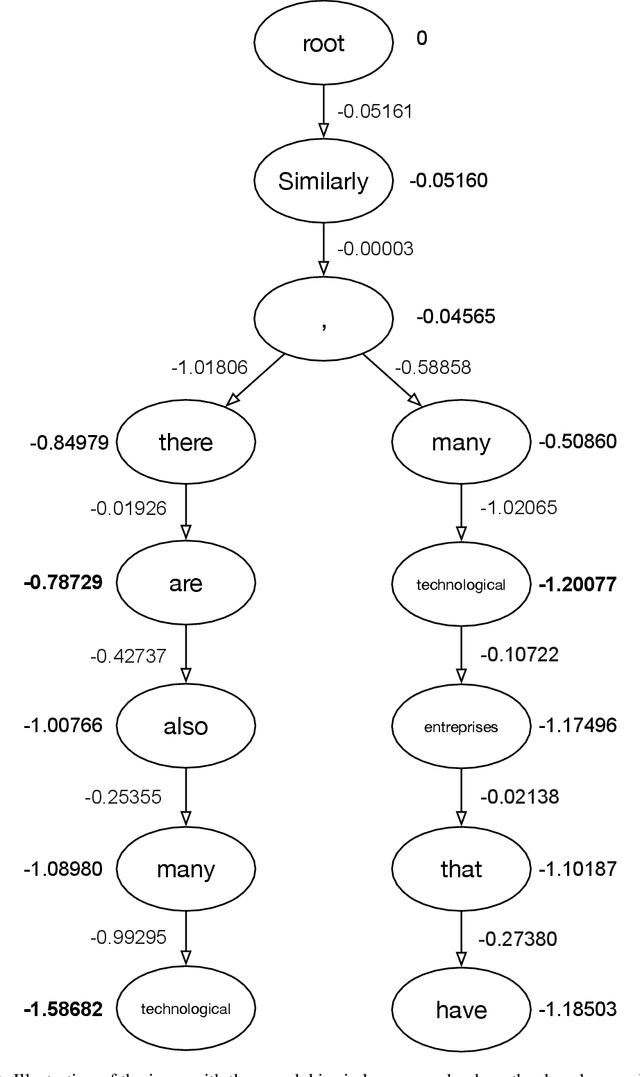
Abstract:We introduce an adaptive tree search algorithm, that can find high-scoring outputs under translation models that make no assumptions about the form or structure of the search objective. This algorithm -- a deterministic variant of Monte Carlo tree search -- enables the exploration of new kinds of models that are unencumbered by constraints imposed to make decoding tractable, such as autoregressivity or conditional independence assumptions. When applied to autoregressive models, our algorithm has different biases than beam search has, which enables a new analysis of the role of decoding bias in autoregressive models. Empirically, we show that our adaptive tree search algorithm finds outputs with substantially better model scores compared to beam search in autoregressive models, and compared to reranking techniques in models whose scores do not decompose additively with respect to the words in the output. We also characterise the correlation of several translation model objectives with respect to BLEU. We find that while some standard models are poorly calibrated and benefit from the beam search bias, other often more robust models (autoregressive models tuned to maximize expected automatic metric scores, the noisy channel model and a newly proposed objective) benefit from increasing amounts of search using our proposed decoder, whereas the beam search bias limits the improvements obtained from such objectives. Thus, we argue that as models improve, the improvements may be masked by over-reliance on beam search or reranking based methods.
Rapid Task-Solving in Novel Environments
Jun 05, 2020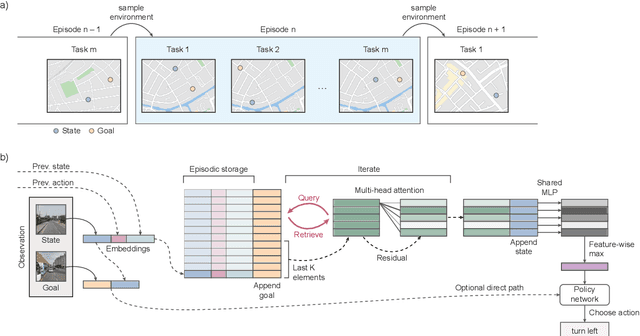
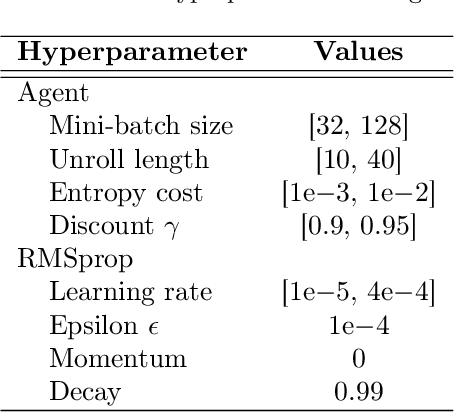
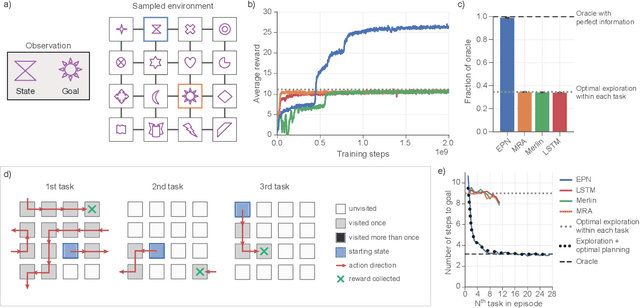
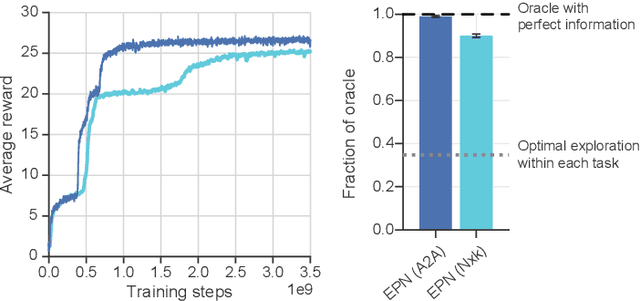
Abstract:When thrust into an unfamiliar environment and charged with solving a series of tasks, an effective agent should (1) leverage prior knowledge to solve its current task while (2) efficiently exploring to gather knowledge for use in future tasks, and then (3) plan using that knowledge when faced with new tasks in that same environment. We introduce two domains for conducting research on this challenge, and find that state-of-the-art deep reinforcement learning (RL) agents fail to plan in novel environments. We develop a recursive implicit planning module that operates over episodic memories, and show that the resulting deep-RL agent is able to explore and plan in novel environments, outperforming the nearest baseline by factors of 2-3 across the two domains. We find evidence that our module (1) learned to execute a sensible information-propagating algorithm and (2) generalizes to situations beyond its training experience.
Putting Machine Translation in Context with the Noisy Channel Model
Oct 01, 2019
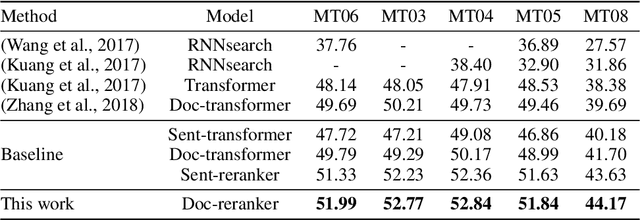
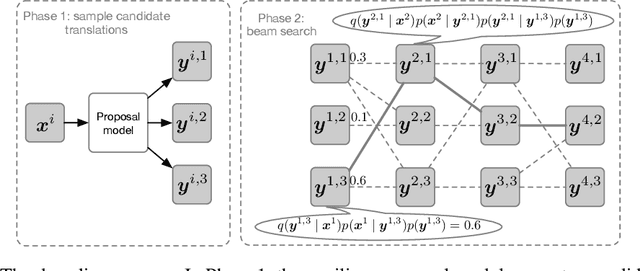

Abstract:We show that Bayes' rule provides a compelling mechanism for controlling unconditional document language models, using the long-standing challenge of effectively leveraging document context in machine translation. In our formulation, we estimate the probability of a candidate translation as the product of the unconditional probability of the candidate output document and the ``reverse translation probability'' of translating the candidate output back into the input source language document---the so-called ``noisy channel'' decomposition. A particular advantage of our model is that it requires only parallel sentences to train, rather than parallel documents, which are not always available. Using a new beam search reranking approximation to solve the decoding problem, we find that document language models outperform language models that assume independence between sentences, and that using either a document or sentence language model outperforms comparable models that directly estimate the translation probability. We obtain the best-published results on the NIST Chinese--English translation task, a standard task for evaluating document translation. Our model also outperforms the benchmark Transformer model by approximately 2.5 BLEU on the WMT19 Chinese--English translation task.
 Add to Chrome
Add to Chrome Add to Firefox
Add to Firefox Add to Edge
Add to Edge